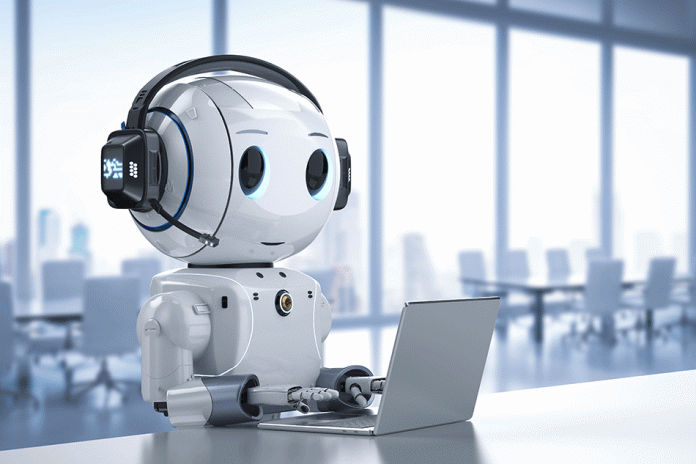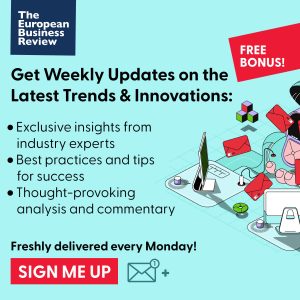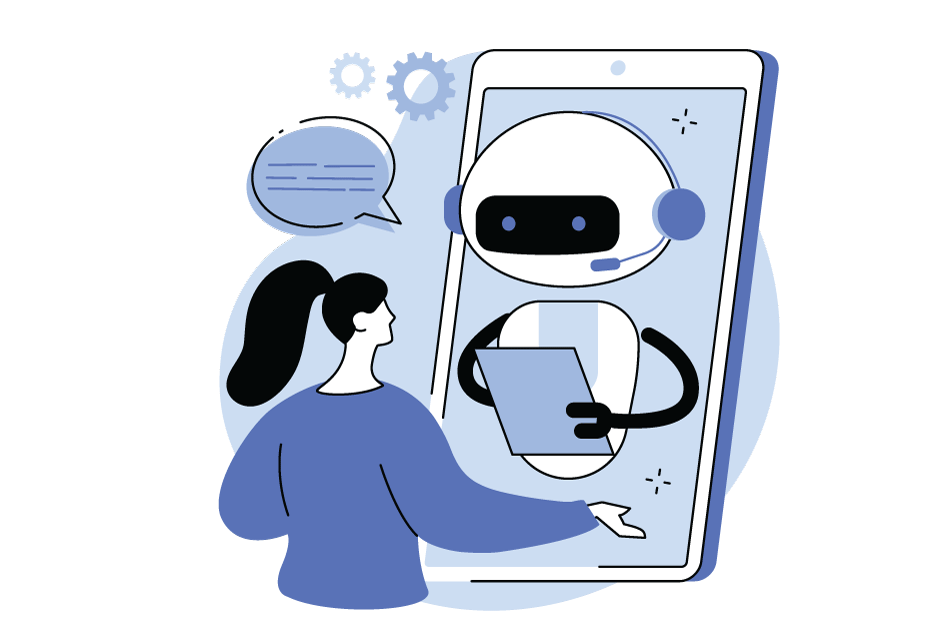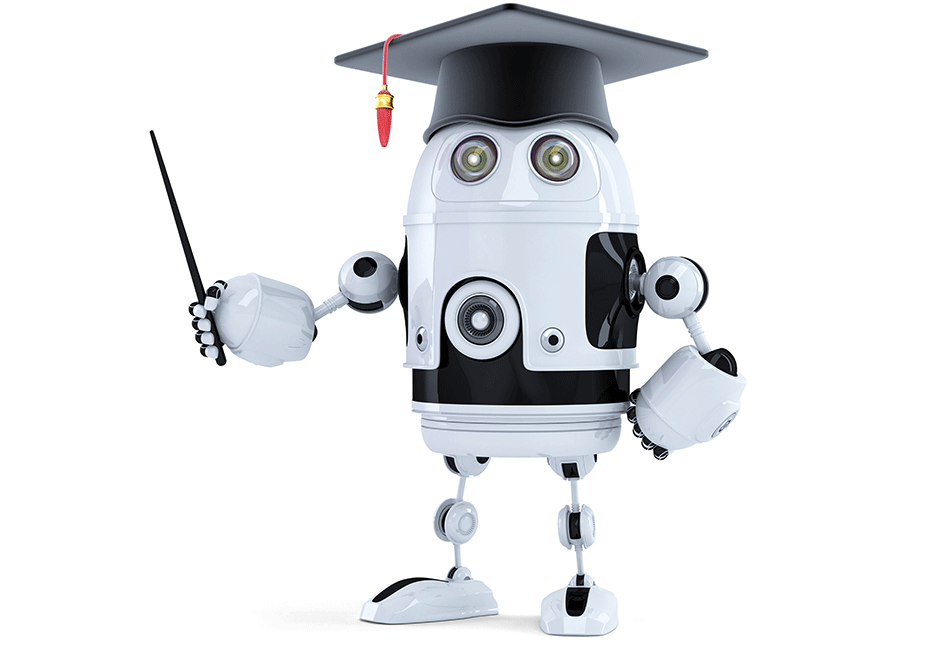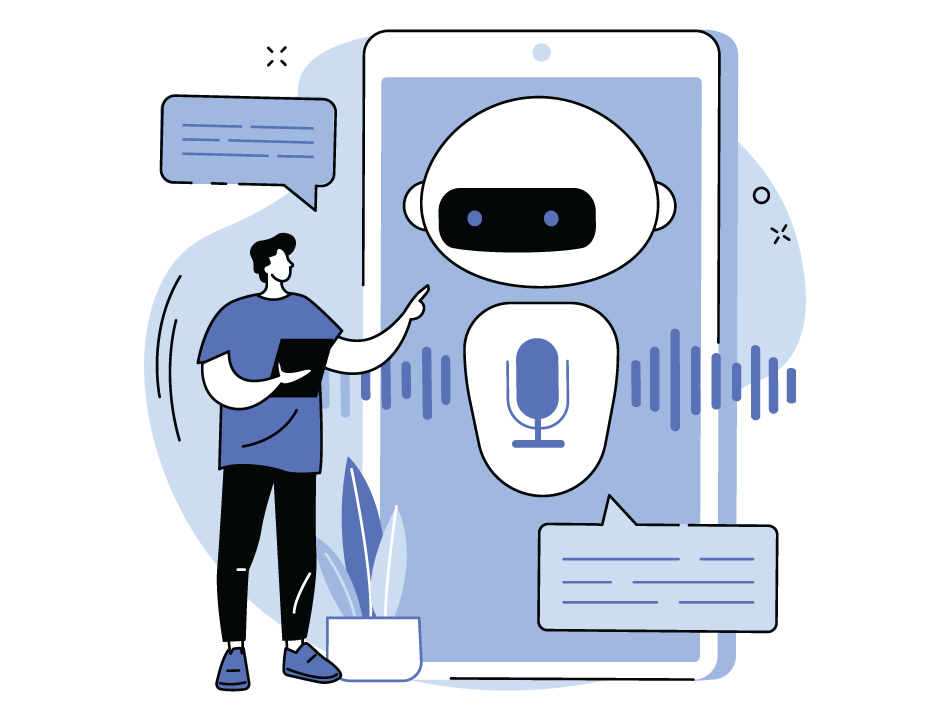By Kathy Hirsh-Pasek and Elias Blinkoff
ChatGPT represents a watershed moment for global education and society. By providing knowledge workers with a well-written first draft, ChatGPT might point the way to the Age of Creativity.
KEY TAKEAWAYS
- ChatGPT, a large language model trained by OpenAI, is a powerful tool for generating creative content across a wide range of industries and applications.
- ChatGPT’s ability to understand natural language and generate human-like responses has many potential use cases, including content creation, customer service, and product development.
- To fully realize the potential of ChatGPT and other generative AI technologies, companies need to invest in talent development, ethical considerations, and innovative business models that leverage AI to create value for customers and stakeholders.
ChatGPT is a game-changer. The AI bot released in November1 writes sonnets like Shakespeare2 and lyrics in the style of the Beatles,3 all in a matter of seconds. And each can be carefully tailored to a user’s unique needs with incredible specificity. Imagine what it can do for journalists investigating a story, physicians seeking a diagnosis, and those who write manuals for products – let alone for students writing papers.
The development of this powerful bot by OpenAI presents a watershed moment for those who thought that pattern-making and cogent information synthesis were crowning achievements of our species and beyond the reach of current computing. If this sounds like science fiction gone awry, stay tuned as ChatGPT hurls humanity forward into the Age of Creativity — forcing us to contend with the reality that technology is again encroaching on human territory.
The Industrial Age of the late 1700s to the mid-1800s was a celebration of mass production. Skilled craftsmen and artisans adopted new roles in factories. Economies flourished under this new system.4 By the mid to late 20th and into the 21st century, we humans progressed to the Information or Digital, Age.5-6 In 1971, the first personal computer was released.7-8 Soon, computers were strong enough to analyse masses of data in mere hours – or even seconds.7 Robots replaced workers on assembly lines9 and powerful computers that used to take up blocks of real estate were literally stored in our pockets.7 Humans adapted as so-called “knowledge workers” who could programme and craft contracts were paid with prestige10 and the highest salaries.11
Now there is ChatGPT. In the last few weeks, the bot passed the US Medical Licensing Exam12 and two multiple-choice sections of the Bar Exam, which is required for practising attorneys.13 It even achieved between a B- and a B on an exam for a management course offered at the University of Pennsylvania’s Wharton School.14 In January alone, an average of 13 million people used ChatGPT each day.15 The bot is trained through a reinforcement procedure that relies on human feedback16 and OpenAI acknowledges that it uses conversations with ChatGPT for training purposes.17 Therefore, it is reasonable to expect that the bot’s performance will only improve with all the new information it receives.
Author Daniel Pink warned us of this advance in 2005 with the publication of his best-selling book, A Whole New Mind.18 In the introduction, he offers a prescient vision of the future:
The past few decades have belonged to a certain kind of person with a certain kind of mind – computer programmers who could crank code, lawyers who could craft contracts, MBAs who could crunch numbers. But the keys to the kingdom are changing hands. The future belongs to a very different kind of person with a very different kind of mind – creators and empathizers, pattern recognizers and meaning makers…..These…big picture thinkers – will now reap society’s richest rewards and share its greatest joys.
| You might also like: |
This shift has implications for the future of work and also huge implications for the future of education. How might we educate creators and meaning makers so that they are prepared for the workplace? Pink suggested that it would require a new mindset that embraced synthesis, play, and empathy to name a few. ChatGPT brings Pink’s vision into palpable reality. And in a world in which bots can make movies,19 do graphic design,20 and write poetry,2 even Pink’s criteria for educating tomorrow’s workers might fall short.
We Humans Respond: Run from Progress
The response from the education sector was strong, swift, and utterly predictable: Block the use of ChatGPT.21 In the United States, school systems in New York, Seattle, Los Angeles, and Baltimore banned the bot. In Australia, Queensland, New South Wales, and Tasmania among other states, closed access to the bot. And in France, one of the nation’s top universities, Sciences Po, prohibited the use of the bot. These restrictions were commonly motivated by concerns about cheating and the accuracy of ChatGPT’s content. Individuals22 and companies,23 including ChatGPT developer OpenAI,24 responded to this anxiety by rapidly creating technologies to distinguish human writing from bot writing. This response is not unusual for a species that responded to the invention of the telephone with concerns about it making our lives either too busy or devoid of meaningful socialisation.25 We similarly reacted to the advent of the personal computer with widespread “computerphobia,” as we struggled to engage with the unfamiliar technology.26
How Should We Humans Respond? Lean into Progress
It is no secret that education systems around the globe are woefully unprepared for this Age of Creativity. Time magazine writers Claudia Wallis and Sonja Steptoe once quipped that if Rip van Winkle woke up today, only one institution would look familiar – our schools.27 Schools are still fashioned for the Industrial Age where products (good grades) are granted to the best memorisers rather than to the most flexible, creative thinkers.28
It is beyond time for our schools to prepare students for the workplace of tomorrow. A January 24th, 2023 article in Fortune magazine reported on a persistent skills gap between employees and employers. Even though there are jobs to fill, workers are not prepared for these jobs. Topping the list of skills employers say they need are compassion and flexibility.29
In our recent book, Making Schools Work, we agree, arguing that today’s students need to learn what we call the 6 Cs. Students must be strong Collaborators who work in teams and build relationships, excellent Communicators with strong Content knowledge, Critical Thinking skills, Creative Innovation, and the Confidence to take intellectual risks. These are the skills that workers must have to succeed in the workplace of tomorrow, where filling in a bubble on a multiple-choice test will not do. The 6 Cs emerge in an educational context vested in active, engaged, meaningful, socially interactive, iterative, and joyful learning.30
Ironically, ChatGPT can help us reach these skills at a higher level if we lean into the technology rather than running away from it. Let’s take Communication skills and focus on writing as an example. Writing is an exercise of the mind. Each draft grows our mental muscles and refines our communication skills. A recent op-ed our colleagues authored in the Philadelphia Inquirer offered a few suggestions:
Throughout students’ education — beginning in the earliest years — we can use ChatGPT’s limitations to teach important media literacy skills about verifying information, how bias plays a role in the information we read, and, importantly, that AI is fallible, prone to mistakes and bias. Relatedly, students must learn about the ethics of utilizing AI generated text, understand how to appropriately credit ChatGPT as a source or co-author, and learn to navigate the boundary between using a tool and plagiarism.
Positioning ChatGPT within writing instruction might open writing and communication as fields to struggling writers. ChatGPT could be a lifeline to the millions of students in the U.S. who cannot write proficiently. In the same way that we would not deprive a life vest to someone drowning, we should not deprive students of tools that can help them improve their written communication skills, such as ChatGPT.31
Additionally, ChatGPT can foster the ability to ask better questions. In these examples alone, Communication, Content and Critical Thinking are advanced. And when students learn to massage the bot output and to develop their own unique thesis (rather than merely report what others have said) they become Creative Thinkers. That is why Kathy Hirsh-Pasek is assigning ChatGPT in her Honours psychology class. Let the students have a first draft. Now let them make it stunningly better.
To date, ChatGPT still has limits. As New York Times columnist Maureen Dowd put it, “For now, ChatGPT is typing not writing. The creative spark requires humanity.”32 It is not sentient, and it is but a synthesiser of information, not a thinker. ChatGPT can only produce a response to a well-written question. It cannot develop a strong thesis or do a scientific experiment. But it is literally in its infancy. Let’s renew this discussion in a year.
The Wake-Up Call
Even with its current limitations, ChatGPT caught our attention. As of February 7, 2023, there were already 676 million hits for the prompt “ChatGPT” on Google, and the Twittersphere is bursting with commentary. ChatGPT is indeed a game-changer that will have rippling effects on education and the workplace. Like the invention of the washing machine, the calculator and the cell phone, the bot can handle the more menial jobs leaving us the time to reflect on the quality of our work rather than merely the productivity. As business writer Adam Grant noted:
Productivity is overrated. What counts most is the quality of output, not the quantity. Success is not about getting more things done. It’s about doing more worthwhile things well.33
ChatGPT might also give us the time to bring more originality and humanity into our work. What if the new standard of success in the workplace is predicated on the originality of our thinking rather than on the number of pieces we write or hours we devote? The Age of Creativity is among us.
Technology has, in an odd way, allowed us to reclaim our humanity. Artisans were displaced for assembly line goods. Now they, with the dreamers and creators, will claim the richest rewards. Yes, Mr Pink, we have entered a new era and technology dragged us there – even the most unwilling participants. But alas, we humans are the architects of both our present and our future. We do know how to educate and work in ways that foster and harness creativity, as the construction of ChatGPT itself demonstrates. Yet its development simultaneously portends a new era – an Age of Creativity – that we should all embrace. Lean in.
So bring on the rebels
The ripples from pebbles
The painters and poets, and plays.
And here’s to the fools who dream
Crazy as they may seem…34
This article was originally published on March 25, 2023.
About the Authors
 Kathy Hirsh-Pasek is the Lefkowitz Faculty Fellow in Psychology at Temple University and a Senior Fellow at the Brookings Institution. Her research examines the development of early language and literacy, the role of play in learning, and learning and technology. She is the author of 16 books and hundreds of publications, has won numerous awards in her field and was inducted into the National Academy of Education. Vested in translating science for lay and professional audiences, her book, Becoming Brilliant, released in 2016 was on the NY Times Best Seller List in Education. Her newest book, Making Schools Work, was released in October of 2022.
Kathy Hirsh-Pasek is the Lefkowitz Faculty Fellow in Psychology at Temple University and a Senior Fellow at the Brookings Institution. Her research examines the development of early language and literacy, the role of play in learning, and learning and technology. She is the author of 16 books and hundreds of publications, has won numerous awards in her field and was inducted into the National Academy of Education. Vested in translating science for lay and professional audiences, her book, Becoming Brilliant, released in 2016 was on the NY Times Best Seller List in Education. Her newest book, Making Schools Work, was released in October of 2022.
 Elias Blinkoff is a developmental psychology graduate student at Temple University mentored by Dr Kathy Hirsh-Pasek. His research explores the intersection between the science of learning and educational practice and policy. Elias’ projects focus on the implementation of playful learning principles to promote 21st-century skills in the classroom at multiple levels, from kindergarten through higher education.
Elias Blinkoff is a developmental psychology graduate student at Temple University mentored by Dr Kathy Hirsh-Pasek. His research explores the intersection between the science of learning and educational practice and policy. Elias’ projects focus on the implementation of playful learning principles to promote 21st-century skills in the classroom at multiple levels, from kindergarten through higher education.
References:
- OpenAI. (2022). ChatGPT: Optimizing Language Models for Dialogue. OpenAI. https://openai.com/blog/chatgpt/
- Lister, F. C. (2022). I Challenged the ChatGPT Bot to a Sonnet-writing Contest. https://medium.com/scribe/i-challenged-the-chatgpt-bot-to-a-sonnet-writing-contest-e6cd5894c61
- Koe, C. (2023). ChatGPT Shows Us How to Make Music with ChatGPT. MusicTech. https://musictech.com/news/gear/ways-to-use-chatgpt-for-music-making/
- Editors of the Encyclopedia Britannica. (2022). Industrial Revolution. In Editors of the Encyclopedia Britannica (Ed.), Encyclopedia Britannica. https://www.britannica.com/event/Industrial-Revolution
- Birkinshaw, J. (2014). Beyond the Information Age. Wired. https://www.wired.com/insights/2014/06/beyond-information-age/
- Birkinshaw, J. (2018). How Is Technological Change Affecting the Nature of the Corporation? Journal of the British Academy, 6(s1), 185-214.
https://doi.org/10.5871/jba/006s1.185 - Computer History Museum. (n.d.). Timeline of Computer History. Computer History Museum.
https://www.computerhistory.org/timeline/computers/ - Wilson, B. (2015). The Man Who Made ´the World´s First Personal Computer´. BBC. https://www.bbc.com/news/business-34639183
- Bharadwaj, A., & Dvorkin, M. A. (2019). The Rise of Automation: How Robots May Impact the U.S. Labor Market. Federal Reserve Bank of St. Louis. https://www.stlouisfed.org/publications/regional-economist/second-quarter-2019/rise-automation-robots#
- Ricard, S. (2020). The Year of the Knowledge Worker. Forbes. https://www.forbes.com/sites/forbestechcouncil/2020/12/10/the-year-of-the-knowledge-worker/?sh=4078c8ad7fbb
- Bureau of Labor Statistics, U.S. Department of Labor (2022). May 2021 National Occupational Employment and Wage Estimates. U.S. Department of Labor Bureau of Labor Statistics.
https://www.bls.gov/oes/current/oes_nat.htm - Kung, T. H., Cheatham, M., ChatGPT, Medenilla, A., Sillos, C., De Leon, L., Elepaño, C., Madriaga, M., Aggabao, R., Diaz-Candido, G., Maningo, J., & Tseng, V. (2022). Performance of ChatGPT on USMLE: Potential for AI-assisted Medical Education Using Large Language Models. medRxiv.
https://doi.org/10.1101/2022.12.19.22283643 - Bommarito, M. J., & Katz, D. M. (2022). GPT Takes the Bar Exam. SSRN. https://doi.org/10.2139/ssrn.4314839
- Terwiesch, C. (2023). Would Chat GPT Get a Wharton MBA? A Prediction Based on Its Performance in the Operations Management Course. https://mackinstitute.wharton.upenn.edu/wp-content/uploads/2023/01/Christian-Terwiesch-Chat-GTP-1.24.pdf
- Hu, K. (2023). ChatGPT Sets Record for Fastest Growing User Base–Analyst Note. https://www.reuters.com/technology/chatgpt-sets-record-fastest-growing-user-base-analyst-note-2023-02-01/
- Ramponi, M. (2022). How ChatGPT Actually Works. https://www.assemblyai.com/blog/how-chatgpt-actually-works/
- OpenAI. (2023). ChatGPT General FAQ.
https://help.openai.com/en/articles/6783457-chatgpt-general-faq - Pink, D. H. (2005). A Whole New Mind: Why Right-brainers Will Rule the Future. Riverhead.
- Contreras, B. (2022). A.I. Is Here and It´s Making Movies. Is Hollywood Ready? LA Times. https://www.latimes.com/entertainment-arts/business/story/2022-12-19/the-next-frontier-in-moviemaking-ai-edits
- McAuliffe, Z. (2022). Microsoft’s New Tools Use AI to Generate Any Image You Imagine. CNET. https://www.cnet.com/tech/services-and-software/microsoft-launches-ai-powered-graphic-design-app-and-more/
- Nolan, B. (2023). Here Are the Schools and Colleges That Have Banned the Use of ChatGPT over Plagiarism and Misinformation Fears. Business Insider. https://www.businessinsider.com/chatgpt-schools-colleges-ban-plagiarism-misinformation-education-2023-1
- Bowman, E. (2023). A College Student Created an App That Can Tell Whether AI Wrote an Essay. NPR. https://www.npr.org/2023/01/09/1147549845/gptzero-ai-chatgpt-edward-tian-plagiarism
- Chechitelli, A. (2023). Sneak Preview of Turnitin’s AI writing and ChatGPT Detection Capability. Turnitin. https://www.turnitin.com/blog/sneak-preview-of-turnitins-ai-writing-and-chatgpt-detection-capability
- Sung, M. (2023). OpenAI Launches Tool to Catch AI-generated Text. NBC. https://www.nbcnews.com/tech/tech-news/openai-tool-catch-ai-generated-text-chatgpt-rcna68480
- Thompson, C. (2016). Texting Isn´t the First New Technology Thought to Impair Social Skills. Smithsonian Magazine. https://www.smithsonianmag.com/innovation/texting-isnt-first-new-technology-thought-impair-social-skills-180958091/
- LaFrance, A. (2015). When People Feared Computers. The Atlantic. https://www.theatlantic.com/technology/archive/2015/03/when-people-feared-computers/388919/
- Wallis, C., & Steptoe, S. (2006). How to Bring Our Schools Out of the 20th Century. Time.
http://content.time.com/time/subscriber/article/0,33009,1568480,00.html - Darling-Hammond, L. (1995). Restructuring Schools for Student Success. Daedalus, 124(4), 153-162. https://www.jstor.org/stable/20027341
- Leonhardt, M. (2023). There’s a Big Skills Gap at Work Right Now. These Are the Top 10 Skills Employers Are Looking for. Fortune. https://fortune.com/2023/01/24/top-skills-employers-are-looking-for/
- Hirsh-Pasek, K., Golinkoff, R. M., Nesbitt, K., Lautenbach, C., Blinkoff, E., & Fifer, G. (2022). MakingSchools Work: Bringing the Science of Learning to Joyful Classroom Practice. Teachers College Press.
- Golinkoff, R. M., & Wilson, J. (2023). ChatGPTIs a Wake-up Call to Revamp How We Teach Writing. The Philadelphia Inquirer. https://www.inquirer.com/opinion/commentary/chatgpt-ban-ai-education-writing-critical-thinking-20230202.html
- Dowd, M. (2023). A.I.: Actually Insipid Until It’s Actively Insidious. New York Times. https://www.nytimes.com/2023/01/28/opinion/chatgpt-ai-technology.html?searchResultPosition=3
- Grant, A. [@AdamMGrant]. (2023, January 15). Productivity is overrated. What counts most is the quality of output, not the quantity. People may be impressed by the…[Tweet]. Twitter.
https://twitter.com/AdamMGrant status/1614638804874280962 - Pasek, B., & Paul, J. (2016). Audition (The Fools Who Dream) [Song]. On La la land. Interscope.


